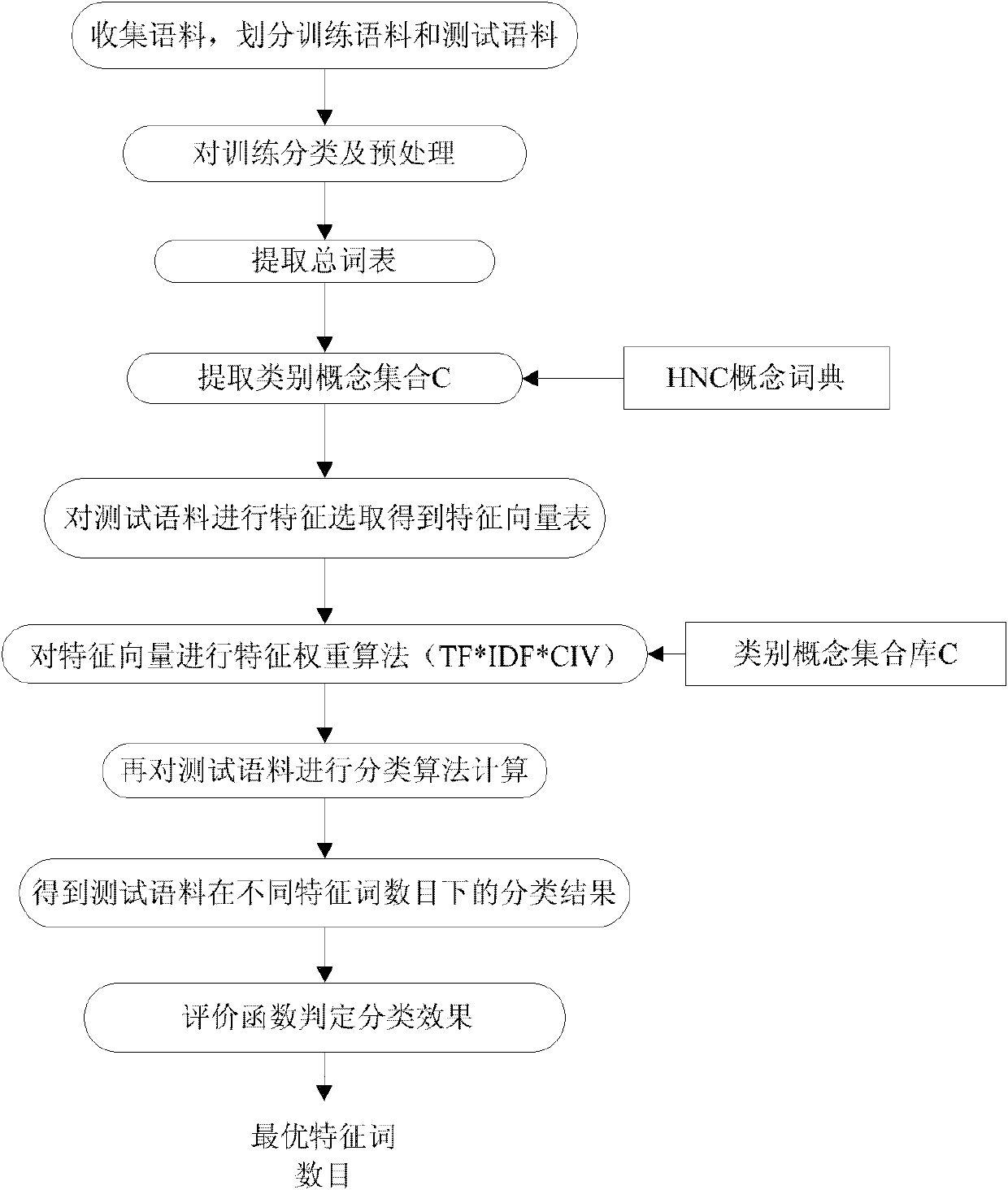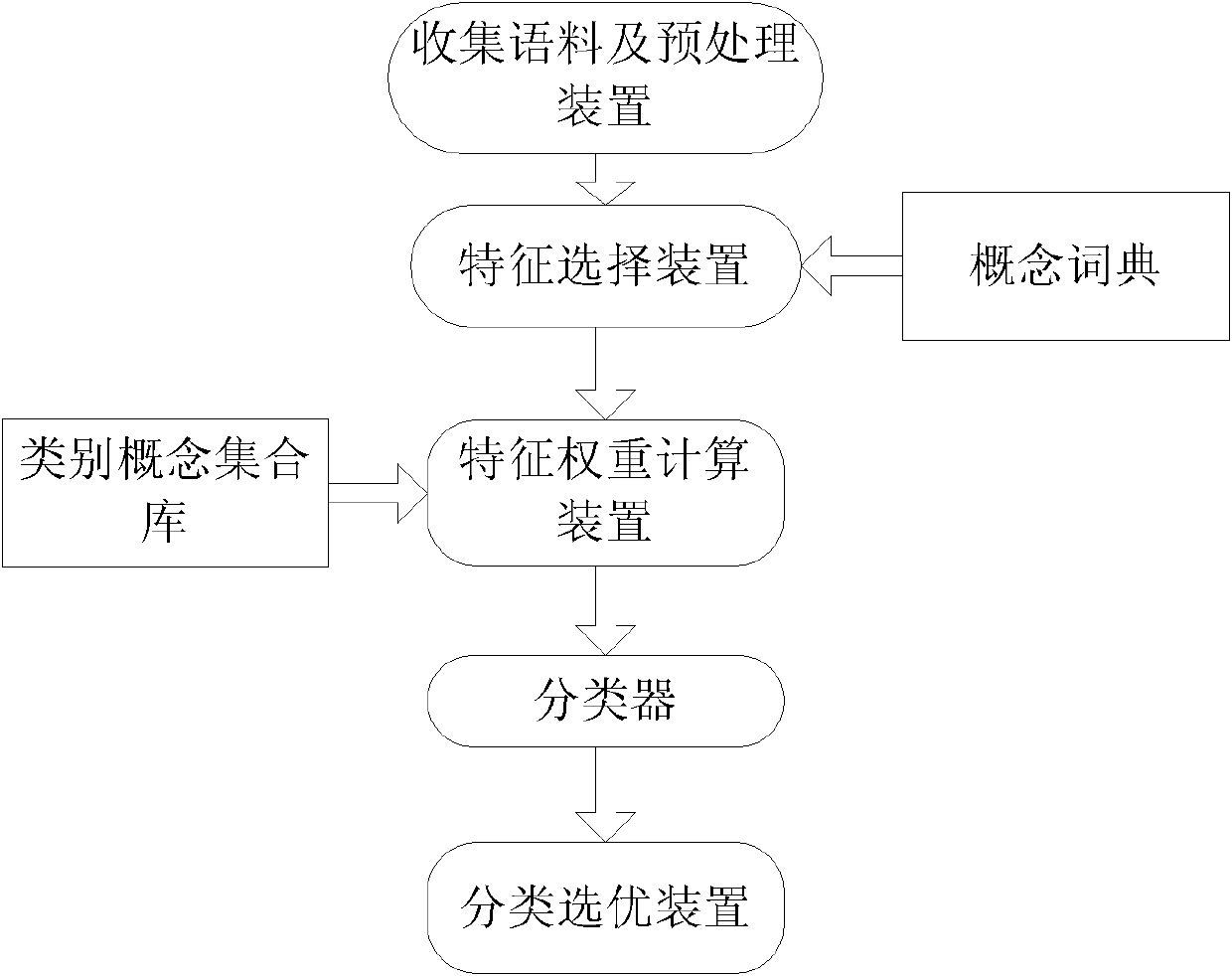Statistic text classification system and statistic text classification method based on term frequency-inverse document frequency (TF*IDF) algorithm
A text classification and statistical technology, applied in the field of computer science, can solve the problems of not considering the semantic similarity of words, low accuracy of text classifiers, etc., to achieve the effect of improving classification accuracy
- Summary
- Abstract
- Description
- Claims
- Application Information
AI Technical Summary
Problems solved by technology
Method used
Image
Examples
Embodiment Construction
[0040] The present invention will be further described below in conjunction with the accompanying drawings and specific embodiments.
[0041] The invention provides a new method for calculating vector weights for effective use of knowledge engineering knowledge in statistical text classification methods. This method introduces the CIV variable into the TF*IDF method, thus obtaining an improved method, that is, the TF*IDF*CIV (Term Frequency, Inverse Document Frequency, Concept Information Value) method. Experiments prove that this method can effectively improve the evaluation indicators of text classification, such as accuracy rate, recall rate and F1 measure.
[0042] Such as figure 1 As shown, the figure is a flow chart of the steps of the statistical text classification method based on the TF*IDF algorithm. The specific steps are as follows:
[0043]Step 1 collects corpus from the Internet, part of which is used as training corpus, and the other part is used as test corpu...
PUM
 Login to View More
Login to View More Abstract
Description
Claims
Application Information
 Login to View More
Login to View More - R&D
- Intellectual Property
- Life Sciences
- Materials
- Tech Scout
- Unparalleled Data Quality
- Higher Quality Content
- 60% Fewer Hallucinations
Browse by: Latest US Patents, China's latest patents, Technical Efficacy Thesaurus, Application Domain, Technology Topic, Popular Technical Reports.
© 2025 PatSnap. All rights reserved.Legal|Privacy policy|Modern Slavery Act Transparency Statement|Sitemap|About US| Contact US: help@patsnap.com



